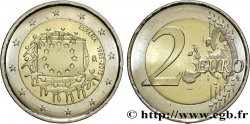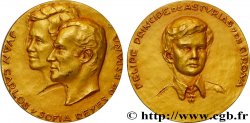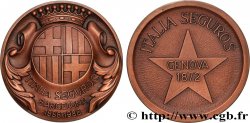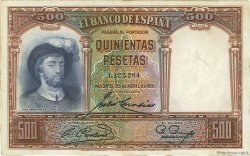E-auction 578-528743 - feu_803901 - SPAIN 2 Euro GROTTE D'ALTAMIRA 2015 Madrid
You must signin and be an approved bidder to bid, LOGIN TO BID. Accounts are subject to approval and the approval process takes place within 48 hours. Do not wait until the day a sale closes to register. Clicking on « bid » constitutes acceptance of the terms of use of cgb.fr private e-auctions.
Bids must be placed in whole Euro amounts only. The sale will start closing at the time stated on the item description; any bids received at the site after the closing time will not be executed. Transmission times may vary and bids could be rejected if you wait until the last second. For further information ckeck the E-auctions F.A.Q.
NO BUYER'S FEE.
NO BUYER'S FEE.
| Estimate : | 5 € |
| Price : | 3 € |
| Maximum bid : | 3 € |
| End of the sale : | 13 May 2024 19:45:20 |
| bidders : | 2 bidders |
Type : 2 Euro GROTTE D'ALTAMIRA
Date: 2015
Mint name / Town : Madrid
Quantity minted : 8.000.000
Metal : copper nickel
Diameter : 25,75 mm
Orientation dies : 12 h.
Weight : 8,50 g.
Edge : cannelures fines continues et 2 ** répété six fois insculpé à l'endroit puis à l'envers.
Catalogue references :
Obverse
Obverse description : dessin d'un bison.
Reverse
Commentary
11ème pièce de 2 Euro commémorative circulante de l’Espagne. Celle-ci est la sixième de la série de la Monnaie Royale Espagnole dédiée aux sites espagnols classés au Patrimoine Mondial de l’Unesco, après la 2 Euro Grande Mosquée de Cordoue en 2010, l’Alhambra de Grenade en 2011, la Cathédrale Sainte-Marie de Burgos en 2012, le Monastère de l’Escurial en 2013 et le parc Güell Gaudi en 2014.
En 2015 le site espagnol illustré est la Grotte d’Altamira et l'art rupestre paléolithique du nord de l’Espagne. À l'avers a donc été reproduit le dessin d'un bison. En effet cet animal est le plus représenté dans la grotte d'Altamira. La grotte en compte seize dessins dans des dimensions, postures et techniques de réalisation différentes.
Située en Cantabrie, dans le nord de l'Espagne, la grotte a été classée au Patrimoine Mondial de l'Unesco en 1985. En 2008 ce classement a été étendu à l'ensemble des dix-sept grottes ornées de la région datant du Paléolithique.
Cet ensemble constitue une représentation exceptionnelle de l'art rupestre du Paléolithique, pour une période s'étalant de 35 000 à 11 000 ans avant J.-C.
.
Spain's 11th circulating 2 Euro commemorative coin. This is the sixth in the Royal Spanish Mint's series dedicated to Spanish sites listed as UNESCO World Heritage Sites, after the 2 Euro Great Mosque of Cordoba in 2010, the Alhambra in Granada in 2011, the Cathedral of Saint Mary of Burgos in 2012, the Monastery of El Escorial in 2013 and Gaudi's Park Güell in 2014. In 2015, the Spanish site illustrated is the Cave of Altamira and the Paleolithic rock art of northern Spain. The obverse therefore features a drawing of a bison. Indeed, this animal is the most represented in the Altamira Cave. The cave has sixteen drawings in different sizes, postures and techniques. Located in Cantabria, in northern Spain, the cave was declared a UNESCO World Heritage Site in 1985. In 2008, this designation was extended to all seventeen decorated caves in the region dating from the Paleolithic period. This collection constitutes an exceptional representation of Paleolithic rock art, for a period spanning from 35,000 to 11,000 years BC.
En 2015 le site espagnol illustré est la Grotte d’Altamira et l'art rupestre paléolithique du nord de l’Espagne. À l'avers a donc été reproduit le dessin d'un bison. En effet cet animal est le plus représenté dans la grotte d'Altamira. La grotte en compte seize dessins dans des dimensions, postures et techniques de réalisation différentes.
Située en Cantabrie, dans le nord de l'Espagne, la grotte a été classée au Patrimoine Mondial de l'Unesco en 1985. En 2008 ce classement a été étendu à l'ensemble des dix-sept grottes ornées de la région datant du Paléolithique.
Cet ensemble constitue une représentation exceptionnelle de l'art rupestre du Paléolithique, pour une période s'étalant de 35 000 à 11 000 ans avant J.-C.
.
Spain's 11th circulating 2 Euro commemorative coin. This is the sixth in the Royal Spanish Mint's series dedicated to Spanish sites listed as UNESCO World Heritage Sites, after the 2 Euro Great Mosque of Cordoba in 2010, the Alhambra in Granada in 2011, the Cathedral of Saint Mary of Burgos in 2012, the Monastery of El Escorial in 2013 and Gaudi's Park Güell in 2014. In 2015, the Spanish site illustrated is the Cave of Altamira and the Paleolithic rock art of northern Spain. The obverse therefore features a drawing of a bison. Indeed, this animal is the most represented in the Altamira Cave. The cave has sixteen drawings in different sizes, postures and techniques. Located in Cantabria, in northern Spain, the cave was declared a UNESCO World Heritage Site in 1985. In 2008, this designation was extended to all seventeen decorated caves in the region dating from the Paleolithic period. This collection constitutes an exceptional representation of Paleolithic rock art, for a period spanning from 35,000 to 11,000 years BC.







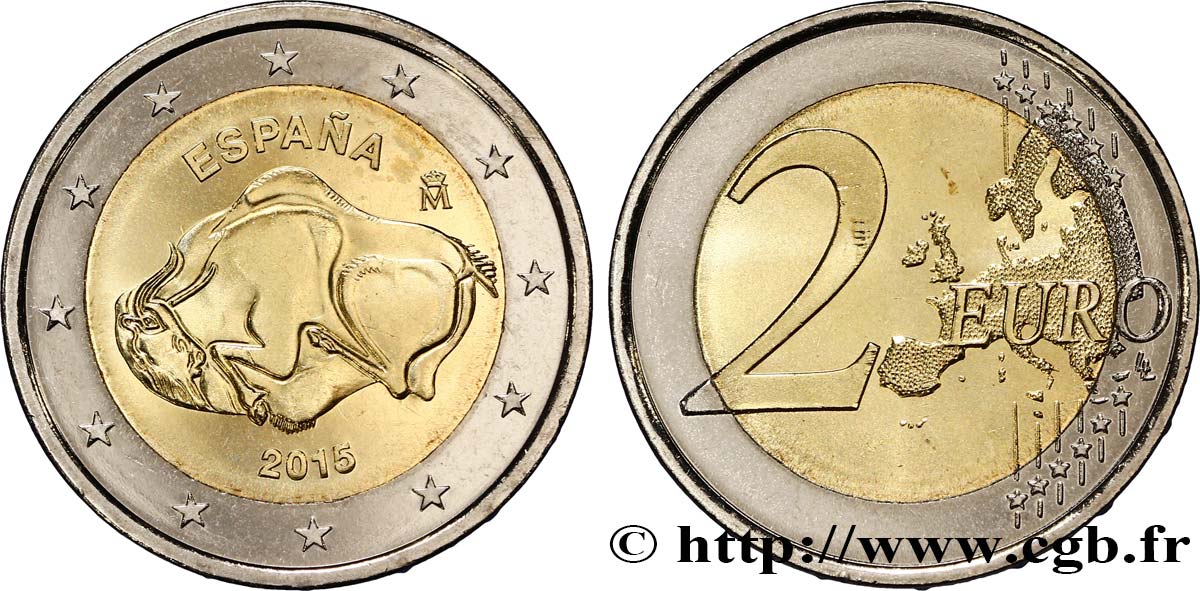
 Report a mistake
Report a mistake Print the page
Print the page Share my selection
Share my selection Ask a question
Ask a question Consign / sell
Consign / sell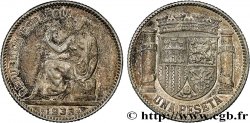
 Full data
Full data